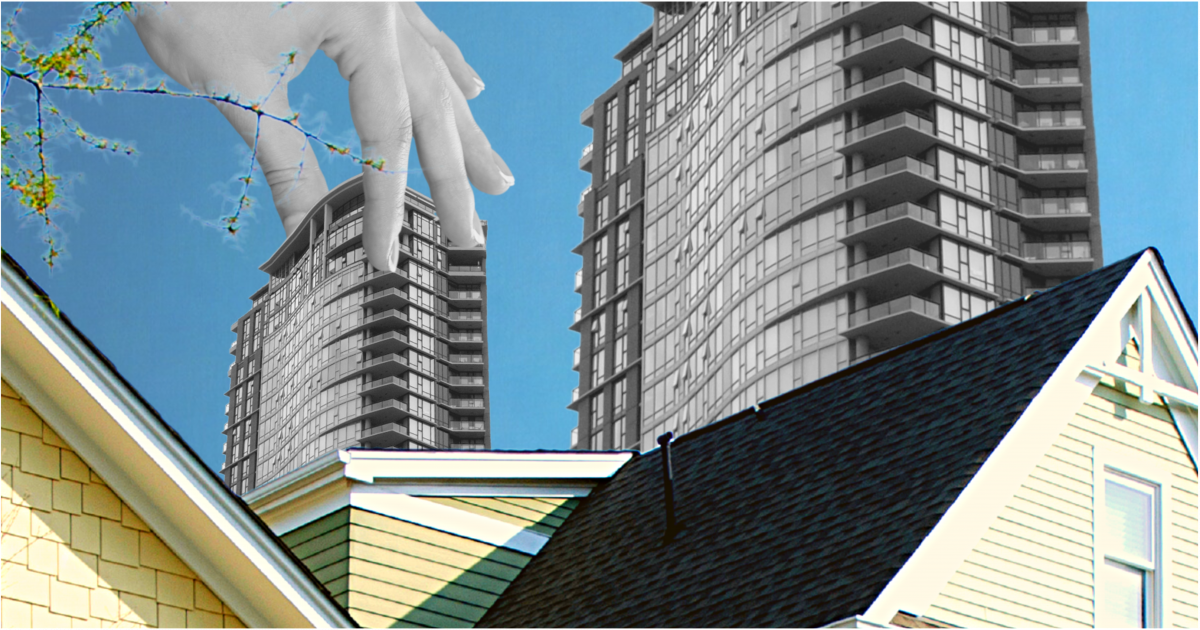
KEY POINTS:
- Late last week, the Austin City Council rushed approved major zoning changes in a rushed vote, allowing large, corridor-style buildings closer to existing homes
- The full contents of the approved ordinance still haven’t been released to the public
- Concerned residents should contact council members and demand a copy of the approved ordinance, along with an explanation of its impact
Last Friday, the Austin City Council rushed through major zoning changes reducing the distance between existing homes and large buildings on corridors. In some locations, they reduced compatibility by as much as 80%, even though city staffers told them at the work session that “[w]e just don’t know how well it’s gonna work.”
Nonetheless, they passed it on all three readings in a short session. Even a week later, it is unknowable what they passed because there were so many last-minute changes.
The council relied on written handouts on the dais, making it impossible for the public to tell which of the 30-plus backup documents they were referring to. Because of last-minute amendments, changes without explanations, and a chaotic discussion, some members of the council didn’t seem to follow what was happening—but that didn’t prevent them from voting to forever impact your neighborhoods.
Only Kathy Tovo abstained from approving this anti-democratic, sham of a process (Vanessa Fuentes was on an airplane). The ordinance with final details will likely not be available for weeks. We will conduct a legal review of the council’s actions, because we believe it is likely they violated a number of state laws.
But this much is clear: This ordinance has little to do with “affordability” and nothing to do with “equity.” The burden is placed on the many current residents who live near their arbitrarily selected ”corridors.” We await the final list of streets and their characterization, but the level of incompatibility residents will experience appears to have been inconsistently applied. The communities most impacted, particularly low- and middle-income, were not consulted by the council in a thoughtful, democratic process.
To see where we think compatibility reductions apply, Community Not Commodity has used City of Austin data to create this preliminary map. We will update it as new information is made available.
If you filed an official rezoning protest before the plan was approved or own property that appears to be affected on this map, we urge you to contact Mayor Steve Adler and your representative on the Austin City Council and demand that they release the approved ordinance, along with an explanation on how you are impacted. Check this map if you aren’t sure which council member represents you.
Together we can build an Austin for everyone!
Mayor Steve Adler:
steve.adler@austintexas.gov | 512-978-2100
Natasha Harper-Madison (District 1):
natasha.madison@austintexas.gov | 512-978-2101
Vanessa Fuentes (District 2):
vanessa.fuentes@austintexas.gov | 512-978-2102
Sabino “Pio” Renteria (District 3):
sabino.renteria@austintexas.gov | 512-978-2103
José “Chito” Vela (District 4):
jose.vela@austintexas.gov | 512-978-2104
Ann Kitchen (District 5):
ann.kitchen@austintexas.gov | 512-978-2105
Mackenzie Kelly (District 6):
mackenzie.kelly@austintexas.gov | 512-978-2106
Leslie Pool (District 7):
leslie.pool@austintexas.gov | 512-978-2107
Paige Ellis (District 8):
paige.ellis@austintexas.gov | 512-978-2108
Kathie Tovo (District 9):
kathie.tovo@austintexas.gov | 512-978-2109
Alison Alter (District 10):
alison.alter@austintexas.gov | 512-978-2110
You may send a single email to the mayor and all council members using this form.